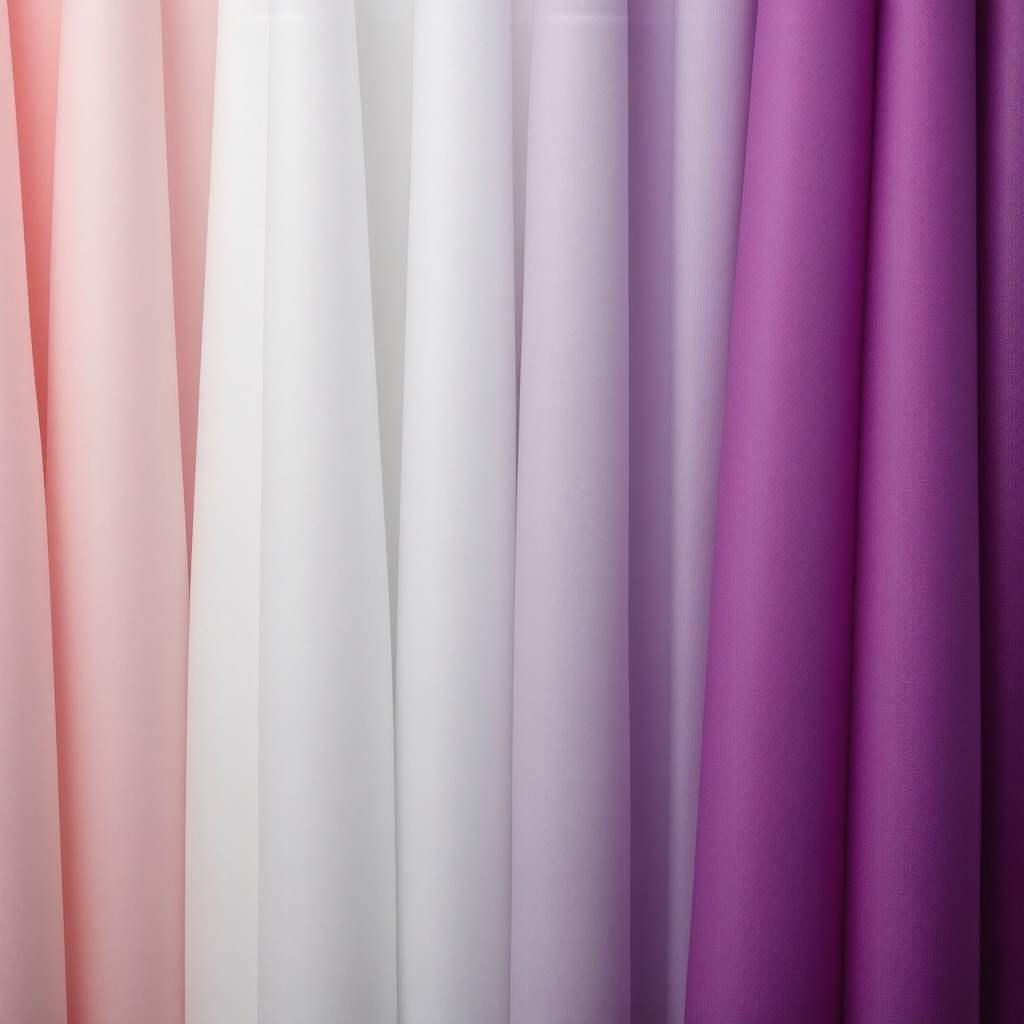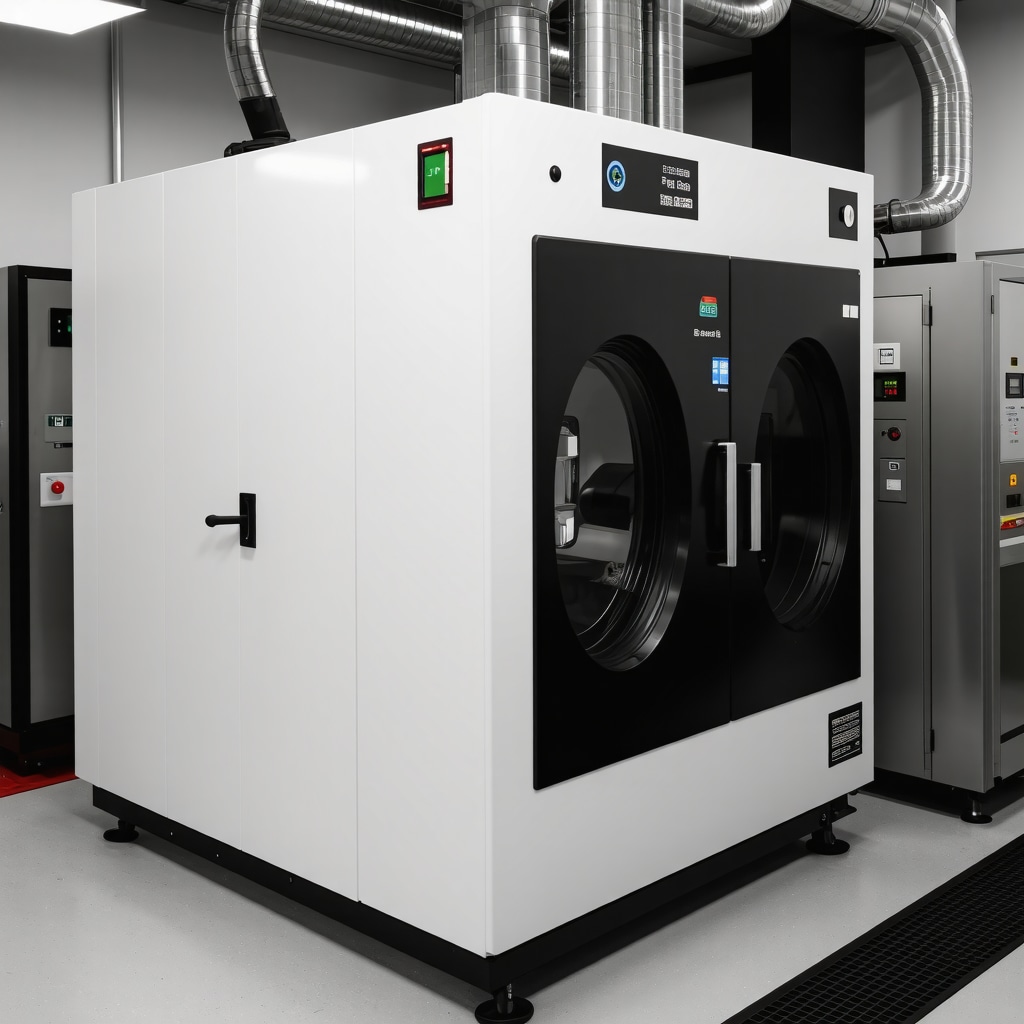Understanding the Nuances of Eco-Conscious Dry Cleaning for Sensitive Fabrics in Tampa
In the realm of textile preservation, especially within Tampa’s vibrant climate, the intersection of affordability, ecological responsibility, and gentle fabric care presents a complex challenge for both consumers and professionals. As an authority in sustainable garment maintenance, I recognize that choosing the right dry cleaning service entails more than surface-level considerations; it demands a nuanced understanding of fabric chemistry, environmental impact, and regional service quality.
Why Eco-Friendly Dry Cleaning Is Critical for Sensitive Fabrics
Traditional dry cleaning often employs perchloroethylene (PERC), a solvent linked to environmental and health concerns. In contrast, eco-friendly alternatives—such as liquid silicone, hydrocarbon solvents, or CO2 cleaning—offer safer, less aggressive options for delicate textiles. Tampa’s eco-conscious consumers increasingly demand services that prioritize sustainability without sacrificing cleaning efficacy, particularly for sensitive fabrics like silk, wool, or custom-made garments.
Evaluating Cost-Effective, Green Dry Cleaning Solutions in Tampa
Achieving a balance between affordability and sustainability requires strategic evaluation of local providers. Many Tampa-based dry cleaners now offer transparent pricing models, often with promotional packages, that incorporate green cleaning technologies. For example, some services leverage advanced solvent recycling systems, reducing operational costs and passing savings onto consumers. Referencing this resource, eco-friendly cleaning is increasingly aligned with economic efficiency, especially when factoring in the long-term preservation of garment quality.
Technical Considerations for Sensitive Fabric Care
Expertise in handling sensitive textiles involves more than choosing the right solvent. It requires meticulous attention to pre-treatment processes, temperature control, and finishing techniques. For instance, the removal of delicate stains from silk or cashmere necessitates specialized knowledge of fiber behavior under various cleaning conditions. Tampa’s professional cleaners with certification in green technologies typically demonstrate a deep understanding of these nuances, ensuring garments retain their integrity and appearance.
How Can Consumers Ensure They Are Selecting the Best Service?
What are the key indicators of a professional, eco-friendly dry cleaner specializing in delicate fabrics?
Consumers should look for certifications such as Green Seal or EcoLogo, transparent disclosure of cleaning solvents, and positive reviews from industry insiders. Engaging with local forums or consulting expert guides can also provide insight into service quality. For example, exploring this guide offers practical steps for selection.
Additionally, understanding the service’s approach to garment preservation—such as hand finishing or tailored cleaning cycles—can be indicative of a commitment to quality. Asking about their process for sensitive fabrics and requesting references from satisfied clients can further establish trust.
Incorporating Sustainable Practices into Your Garment Care Routine
Beyond selecting a service, consumers can adopt practices that extend the lifespan of delicate garments. Proper storage, gentle handling, and timely cleaning are critical. Consulting with Tampa’s experts through resources like this article can provide actionable tips to optimize fabric longevity while maintaining eco-conscious standards.
In conclusion, navigating Tampa’s landscape of affordable, eco-friendly dry cleaning for sensitive fabrics requires a discerning approach rooted in technical knowledge and regional expertise. As the industry evolves, ongoing dialogue between consumers and professionals will remain vital for advancing sustainable, high-quality fabric care.
Advanced Techniques in Eco-Conscious Fabric Care for Tampa’s Discerning Consumers
In the pursuit of perfect garment preservation, especially for delicate textiles, understanding the latest innovations and expert practices in eco-friendly dry cleaning is crucial. Tampa’s leading green cleaning providers are now integrating cutting-edge technologies such as supercritical CO2 cleaning, which eliminates the need for traditional solvents while maintaining exceptional cleaning standards. This approach not only reduces environmental impact but also extends the lifespan of sensitive fabrics like silk, cashmere, and fine wool.
How Do Modern Eco-Friendly Methods Surpass Traditional Cleaning?
Traditional dry cleaning relies heavily on perchloroethylene (PERC), a solvent with known health and environmental risks. In contrast, advanced methods like hydrocarbon solvents and liquid silicone offer gentler, safer alternatives, ensuring fabrics retain their softness and sheen. For instance, this resource highlights how Tampa’s eco-conscious dry cleaners are adopting these innovations to meet consumer demand for sustainable yet effective solutions. These technologies often incorporate solvent recycling systems, significantly reducing waste and operational costs, making green cleaning more accessible and affordable.
Expert Insights: What Are the Critical Factors for Ensuring Top-Quality Sensitive Fabric Cleaning?
Beyond solvent choice, factors such as precise temperature regulation, gentle agitation, and meticulous hand-finishing are essential. Certified professionals trained in green technologies understand how to adapt their methods to different fiber types, ensuring garments are cleaned without compromise. For example, specialized pre-treatment for stains on silk or cashmere can make the difference between a preserved garment and damage. Tampa’s top-rated eco-friendly cleaners often employ tailored cycles and finishing techniques, which are vital for maintaining the integrity of delicate textiles.
What Are the Hidden Signs of a Truly Expert Eco-Friendly Dry Cleaner?
How can consumers differentiate between eco-friendly claims and genuine expertise?
Look for certifications like Green Seal or EcoLogo, which validate environmentally responsible practices. Transparent communication about solvents used, along with detailed garment care processes, is another indicator of professionalism. Engaging with customer reviews and seeking advice from local industry experts can further clarify service quality. For example, this guide provides practical insights into selecting the best eco-friendly dry cleaner.
Additionally, inquire about their handling of sensitive fabrics, such as whether they use hand finishing or gentle pressing techniques. Asking for references or case studies related to delicate textile care can deepen your confidence in their expertise.
Innovative Strategies to Prolong Garment Lifespan with Sustainable Practices
Incorporating eco-friendly cleaning into your routine involves more than choosing the right service. Proper storage, avoiding excessive washing, and prompt cleaning of stains can significantly extend the life of sensitive garments. Tampa’s experts recommend using natural fiber-friendly storage options and regularly consulting resources like this article for actionable tips. Additionally, combining professional cleaning with at-home care, such as gentle hand washing for some fabrics, creates a comprehensive preservation strategy.

Are you curious about the latest eco-friendly cleaning innovations and how they can benefit your wardrobe? Share your thoughts or ask questions below, and explore more expert insights at this trusted resource.
Innovative Eco-Friendly Technologies Revolutionizing Sensitive Fabric Care in Tampa
As Tampa’s dry cleaning industry advances, the integration of cutting-edge eco-friendly technologies is transforming how professionals approach sensitive fabric care. Supercritical CO2 cleaning, for instance, has emerged as a groundbreaking method, utilizing carbon dioxide in a fluid state to effectively clean garments without the need for traditional chemical solvents. This technique not only minimizes environmental impact but also preserves the delicate fibers of silk, cashmere, and fine wool with unprecedented precision.
Furthermore, advancements in closed-loop solvent systems enable cleaners to recycle cleaning agents continuously, significantly reducing waste and operational costs. These innovations exemplify how Tampa’s industry leaders are setting new standards for sustainable, high-quality garment care, ensuring that delicate textiles are preserved in the most eco-conscious manner possible.
Deep Dive: How Does Supercritical CO2 Cleaning Outperform Conventional Methods?
Supercritical CO2 cleaning operates under specific temperature and pressure conditions, transforming carbon dioxide into a supercritical state that exhibits both gas-like and liquid-like properties. This duality allows it to penetrate fabrics deeply, lifting dirt and oils effectively without the aggressive agitation associated with traditional solvents. According to a detailed study by the Environmental Protection Agency, this method reduces volatile organic compounds (VOCs) emissions by over 95% compared to PERC-based cleaning, showcasing its superior environmental profile (EPA Supercritical CO2 Tech Overview).
In practice, supercritical CO2 cleaning is gentle on fibers, preventing shrinkage, color fading, or fiber damage—common concerns with conventional solvents. This makes it especially suitable for high-value, sensitive garments that require meticulous care, aligning perfectly with Tampa’s eco-conscious consumer base seeking both sustainability and quality.
Expert-Level Strategies for Optimizing Sensitive Fabric Preservation
Maximizing the lifespan of delicate textiles demands a comprehensive approach beyond solvent selection. Experts advocate for pre-treatment protocols that target specific stains without exposing garments to excessive moisture or heat. For instance, utilizing enzyme-based pre-treatments for protein stains on silk can significantly enhance cleaning outcomes while maintaining fiber integrity.
Temperature control during the cleaning cycle is critical; maintaining the lowest effective temperature minimizes fiber stress. Post-cleaning finishing techniques like specialized hand pressing and tailored steaming restore garments to their optimal appearance, ensuring a pristine look without compromising fabric health.
How Can Consumers Identify Truly Expert Eco-Friendly Dry Cleaners Specializing in Sensitive Fabrics?
What are the nuanced indicators of a high-caliber, environmentally responsible dry cleaning service in Tampa?
Beyond certifications such as Green Seal or EcoLogo, discerning consumers should inquire about the specific cleaning technologies employed and request detailed explanations of their processes. Industry reputation, transparent communication, and personalized service—like consultations on fabric-specific care—are strong indicators of expertise. Engaging with community forums or expert reviews can further refine your choice, ensuring alignment with your sustainability values and garment preservation goals.
For example, a reputable Tampa-based eco-cleaner might showcase their use of supercritical CO2 systems and provide case studies demonstrating their success with sensitive textiles. Asking about their staff’s training in delicate fabric handling and requesting references from clients with similar needs can solidify your confidence in their proficiency.
Incorporating Advanced Techniques into Your Sustainable Garment Care Routine
While professional services are paramount, consumers can extend garment longevity through thoughtful at-home practices. Gentle storage in natural fiber bags, avoiding excessive washing, and prompt stain treatment all contribute to preserving the integrity of sensitive fabrics. Consulting with Tampa’s eco-friendly experts through resources like this guide provides practical tips for a holistic approach to sustainable garment care.
By integrating professional eco-conscious cleaning with meticulous at-home handling, consumers can enjoy the longevity of their delicate garments while minimizing environmental impact—an essential balance in today’s eco-aware society.
Unlocking the Secrets of Supercritical CO2 and Beyond in Tampa’s Textile Preservation
Within Tampa’s eco-conscious garment care landscape, innovative technologies such as supercritical CO2 cleaning are revolutionizing how delicate fabrics like silk and cashmere are preserved. These methods exemplify the industry’s move toward sustainable, chemical-free solutions that do not compromise cleaning power.
What Makes Supercritical CO2 the Gold Standard for Delicate Textile Care?
Supercritical CO2 operates under precise temperature and pressure conditions, transforming carbon dioxide into a supercritical state that seamlessly combines the properties of gases and liquids. This state enables deep fabric penetration, lifting dirt and oils without damaging fibers—an advantage highlighted by the EPA’s overview of supercritical CO2 cleaning. Unlike traditional solvents, it leaves zero residues, making it ideal for high-value, sensitive garments.

What Are the Hidden Technical Nuances for Expert Sensitive Fabric Cleaning?
Achieving optimal results involves meticulous pre-treatment tailored to stain types, coupled with temperature regulation to prevent fiber stress. For instance, enzyme-based pre-treatments target protein stains on silk without compromising fiber integrity. Post-cleaning, expert hand-finishing techniques restore garments to their pristine condition, emphasizing the importance of skilled craftsmanship in eco-friendly settings.
How Can Consumers Detect Genuine Expertise in Eco-Conscious Dry Cleaners?
What are the subtle signs indicating a high-caliber, environmentally responsible dry cleaner specializing in delicate textiles?
Beyond certifications like Green Seal, pay attention to transparency about cleaning processes and solvent usage. Reputable providers often showcase case studies on sensitive fabric care and provide detailed client references. Engaging with industry-specific reviews and local expert forums can further refine your choice, ensuring alignment with sustainability values and quality standards. For example, this guide offers practical insights for discerning consumers.
Additionally, inquire about personalized care approaches, such as hand-finishing or tailored cleaning cycles, which signify a commitment to high-quality, eco-conscious service.
Integrating Cutting-Edge Techniques into Your Sustainable Garment Routine
Beyond professional cleaning, adopting eco-friendly practices at home—like proper storage in natural fiber bags, gentle handling, and immediate stain treatment—further extends garment lifespan. Tampa’s experts recommend consulting resources like this article for actionable tips to enhance your sustainable routine.
Are you eager to learn how the latest innovations in eco-friendly cleaning can transform your wardrobe care? Share your questions or insights below, and explore more expert advice at this trusted resource.
Future-Proofing Garments: The Role of Advanced Eco-Technologies in Tampa
Emerging technologies such as closed-loop solvent systems and supercritical fluid cleaning are setting new standards for sustainability. These innovations not only minimize environmental impact but also enhance fiber preservation, ensuring garments retain their original sheen and texture longer. Tampa’s industry leaders are pioneering these methods, demonstrating a commitment to responsible, high-quality textile care.
What Are the Practical Benefits of Integrating These Technologies?
Practically, these systems reduce chemical waste, lower operational costs, and improve cleaning efficacy for sensitive fabrics. For consumers, this translates into safer, more sustainable garment maintenance that aligns with eco-conscious lifestyles. Industry reports, such as those by the EPA, substantiate the environmental advantages of these cutting-edge solutions.
Expert Insights & Advanced Considerations
1. The Integration of Supercritical CO2 Technology
Supercritical CO2 cleaning represents a revolutionary step in eco-conscious fabric care, offering a solvent-free, highly effective method for delicate textiles. Tampa’s industry leaders adopting this technology demonstrate a commitment to sustainability and garment preservation, ensuring fibers like silk and cashmere are handled with precision and care.
2. The Nuanced Role of Fiber-Specific Pre-Treatment
Advanced dry cleaners tailor pre-treatment protocols based on fiber types and stain compositions. Enzyme-based solutions for protein stains on silk, combined with temperature regulation, optimize cleaning outcomes while safeguarding fabric integrity, reflecting a high level of technical expertise.
3. The Importance of Certification and Transparency
Certifications such as Green Seal and EcoLogo serve as credible indicators of a cleaner’s commitment to eco-friendly practices. Transparent communication about solvents and processes, along with detailed case studies, establish trust and demonstrate technical proficiency in sensitive fabric care.
4. Long-Term Garment Preservation Strategies
Implementing at-home practices like gentle storage, prompt stain treatment, and minimal washing extend garment lifespan. When complemented by professional eco-friendly cleaning, these strategies form a holistic approach to sustainable textile preservation.
5. The Future of Sustainable Fabric Care
Emerging technologies such as closed-loop solvent systems and supercritical fluid cleaning are setting new industry standards. These innovations reduce environmental impact and enhance fiber longevity, positioning Tampa as a leader in responsible garment care.
Curated Expert Resources
- EPA’s Supercritical CO2 Cleaning Technologies Overview: Offers in-depth technical details and environmental benefits of supercritical CO2, essential for industry professionals seeking advanced knowledge.
- Green Seal Certification Program: Provides authoritative standards and certification criteria that validate a cleaner’s eco-friendly commitments, vital for consumer trust and industry benchmarking.
- Industry Journals such as Textile Research Journal: Feature peer-reviewed studies on fiber-specific cleaning techniques and innovations, crucial for ongoing professional development.
- Professional Associations like the Textile Care Allied Trades Association (TCATA): Offer training, certifications, and industry updates on sustainable practices and emerging technologies.
- Regional Industry Reports and Case Studies: Document Tampa’s leading green cleaning providers’ implementation of advanced methods, serving as practical benchmarks for best practices.
Final Expert Perspective
In the evolving landscape of eco-friendly dry cleaning, especially for sensitive fabrics, Tampa’s industry exemplifies how technological innovation and technical expertise converge to deliver sustainable, high-quality results. Embracing advanced solutions like supercritical CO2 and fiber-specific pre-treatment protocols not only enhances garment longevity but also aligns with the broader commitment to environmental stewardship. As professionals and consumers deepen their understanding through reputable resources and certifications, they foster a culture of excellence and responsibility in textile preservation. For those committed to sustainability and garment integrity, engaging with expert insights and staying informed about technological advancements remains essential. Explore these resources and share your insights or questions to contribute to the ongoing dialogue shaping Tampa’s eco-conscious fabric care industry.

This post offers such a comprehensive overview of Tampa’s eco-friendly dry cleaning options, especially for delicate fabrics like silk and cashmere. As someone who owns a small boutique with high-value textiles, I’ve been exploring the latest in supercritical CO2 cleaning — it’s impressive how it minimizes environmental impact while maintaining quality. I’ve noticed that some local green cleaners also emphasize fiber-specific pre-treatment, which seems crucial for preventing fiber damage during cleaning.
One challenge I often face is balancing cost with these advanced cleaning practices. Have others found that the investment in eco-friendly, high-tech cleaning methods pays off in garment longevity and customer satisfaction? Also, how do you usually verify whether a cleaner genuinely uses these innovative, eco-conscious techniques? I’d love to hear tips from industry professionals or fellow consumers on how to spot authentic expertise in this space.
This article really highlights how crucial it is to choose a dry cleaner that not only uses eco-friendly methods but also has the technical expertise to handle delicate fabrics properly. Having worked in the fashion retail industry here in Tampa for years, I’ve seen firsthand how supercritical CO2 cleaning and fiber-specific pre-treatment can prolong the life of luxury textiles like silk and cashmere, saving both money and environmental impact in the long run. One aspect I find particularly interesting is how these advanced technologies also offer better stain removal without risking fiber damage, which is such a delicate balance to strike. I wonder, for those who’ve gone through the process of switching to an eco-conscious cleaner, how much have you noticed these investments in technology and expertise impact the overall durability of your garments? Are there specific certifications or signs you always look for that guarantee a cleaner truly prioritizes both sustainability and technical mastery? I’d love to hear more about practical experiences and tips from industry professionals or fellow consumers.